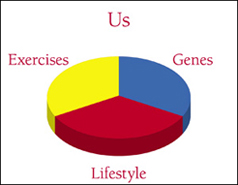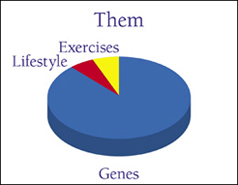What is Good Posture?
Structures like bridges or skyscrapers sometimes behave in unpredictable ways, challenging the engineers who build them to forecast and prevent any possible catastrophic failure. They know that every building they design is more than the sum of its parts and they must match the architecture of the building with its surroundings, allowing it to behave in harmony with itself and the environment. A classic example of what can go wrong when we ignore that interaction was the destruction of the Tacoma Narrows Bridge in Washington, torn to pieces in 1940 by the strong winds that regularly blow in that area. The winds responsible for such damage were not very strong, but they were coincidentally tuned into the natural swaying frequency of that bridge, comparable to pushing a child on a swing higher and higher. The human body is a machine far more complex than anything engineers could build, each one of us containing a distinctive combination of muscles, bones, and nerves that behave in a unique way, subjected to different forces and different environments. I picture the interaction of these multiple parts and the resulting motion that comes from it as a melody, the harmony that comes from playing just the right notes, or from moving just the right muscles. It would be presumptuous for anybody to try to apply a cookie cutter model or a single formula to determine the perfect posture for everyone regardless of age, sex, or cultural background, for instance. Instead, I hope that by following the guidelines we set in this book, each one of you may come across your own personal, unique, feel-good stance. Once you discover your perfect, harmonious posture, you may find yourself more relaxed, confident, and energized. The combination of the correct posture and a faithful exercise program may reduce or eliminate a variety of aches and pains that affect us all, while decreasing the stiffness and fatigue that creep in as we age. As difficult as it is to define it, good standing posture certainly isn't the hard, inflexible soldier's stance, inflated chest, standing at attention. It is perhaps better defined as a posture that imparts a feeling of lightness: head reaching upwards, like helium balloons attached to the top of one's skull. A person's correct stance has to feel comfortable, relaxing, and natural; it should merge seamlessly into one's personality and daily routine, as cozy as a favorite sweater. There are many reasons why holding a proper posture may make us feel better:
Some fortunes you inherit, some you create. Certain people are lucky enough to be born with the right kind of genes that may afford them, for example, an impeccable set of teeth, a hawk-like vision, or even an effortless perfect posture. The rest of us, mere mortals, may need to wear braces, glasses, or we may need to work real hard for that awe-inspiring stance we covet. If we didn't inherit it, we'll have to get it the old-fashioned way: by exercising and modifying our lifestyle to overcome our genetic limitations.   |
LifestyleThe Internal Organs and Posture |